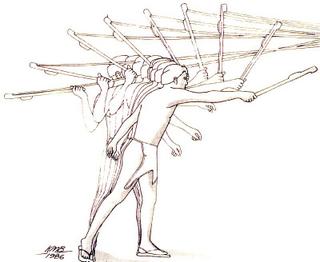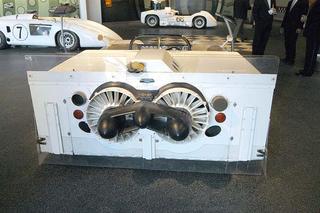The Art of Noises

One aspect of this site that has been sorely lacking is discussion of sound. I became interested in sounds/noise/non-music many years ago just messing around with electric guitars and such, sometimes with a friend or two involved as well. Often, they just wanted to be loud, which with modern amplifiers is not difficult. I frequently tried to create cascading walls of dense sounds, or small intricate nonmusical sounds. This is long before I'd found out others had beaten me to this particular field of interest.
Luigi Russolo was a futurist painter, who also composed music. He is also the author of the noise manifesto " The Art of Noises". In it, he suggests that noisesound must be as fully explored as musical sound had already been. He even went so far as to design and build noise instruments, which he called " Intonarumori", or "Intoners".
Some other pioneers in experimental music were Lou Reed with his 1975 album " Metal Machine Music". It was a double LP, and featured only guitar sounds and effects. No normal chord progressions or "songs". Loud, sometimes dissonant, and completely void of beats or Reed's trademark voice or lyrics. It is his best album to me. :)
Brian Eno was a member of Roxy Music, but was a self-professed "non-musician" in the group. He mixed, processed and otherwise messed about with the sound of the band at live shows and in the studio. For the purposes of this article, I will only mention one of his many recordings: " Ambient 1/Music for Airports " (1978). This record was one of, if not the first to be use the term " ambient " in regard to music or sound specifically recorded to be "as ignorable as it is interesting."(from the liner notes of "Ambient 1"). He went on to record many other albums with ambient aspects, and is still active today, and still experimenting with sounds.
Noise music is still being made and expanded upon decades after Russolo's early projects. Much of it is done with software now, but one interesting descendant of the mechanical school of noise, is Matt Heckert and his Mechanical Sound Orchestra . Heckert was a member of Survival Research Labs , a giant machine/robot/noise/performance art group doing background sound work for performances. After splitting off from the group, he began building machines *specifically* for the sounds they could produce.























